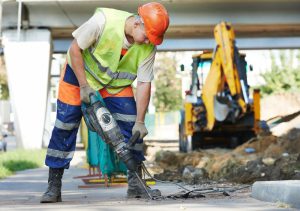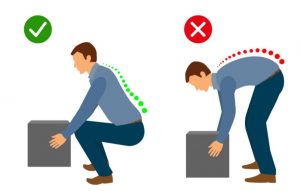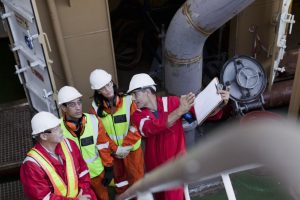Preventing manual handling injuries in your workplace (Part 1)
Manual handling may seem low risk to most employers, but it is actually the leading cause of injury in the workplace. In 2018-19, Safe Work Australia identified musculoskeletal disorders to be the most common mechanism leading to a serious workers’ compensation claim, accounting for 87% of all serious claims*. Of these, the most frequent were traumatic joint/ ligament and muscle/ tendon injuries, which accounted for 39% of serious claims overall. Because the risk is alarmingly high, it is vital that employers have a good program to ensure their workers do not experience any manual handling injury.

Manual handling is the leading cause of injury in the workplace
The following are some helpful tips to help you understand the issues around manual handling.
What are musculoskeletal injuries?
Musculoskeletal injuries can be permanent and can impact a worker’s working ability and their quality of life. Musculoskeletal injuries is more than just a bad back, but include:
- Muscle strains and sprains
- Ligament or tendon rupture
- Prolapsed intervertebral discs
- Tendonitis of the shoulders and elbows
- Carpal tunnel syndrome.
Manual handling, or Hazardous Manual Tasks (HMT), can contribute to musculoskeletal injuries. Hazardous Manual Tasks require a person to lift, lower, push, pull, carry, move, hold or restrain a person, animal or object.
Hazardous Manual Tasks involve one or more of the following:
- Repetitive or sustained force
- High or sudden force
- Repetitive movement
- Sustained or awkward posture
- Exposure to vibration

Frequent exposure to vibration can contribute to musculoskeletal injuries
What else can contribute to musculoskeletal disorder?
Apart from exposure to Hazardous Manual Tasks, musculoskeletal injuries can also be caused by:
- Slips, trips and falls at levels
- Hitting or being hit by objects
- Contributing psychosocial factors.
When can HMT related injury occur?
- As a single, one off exposure, due to overloading the body. This tends to be a rare event.
- As repeated exposure or ongoing wear and tear as part of work duties. This is more common in the workplace.

Repeated awkward posture over long term can lead to musculoskeletal injuries
Managing the risks of Hazardous Manual Tasks
Work Health and Safety regulations states that employers must manage risks associated with Hazardous Manual Tasks, to prevent musculoskeletal injuries. In the past, manual handling controls have focused on teaching the “straight back and bend knees” lifting principle. However recent research has shown that teaching lifting techniques alone is not effective in reducing HMT risks.

Teaching lifting techniques alone is not enough in preventing manual handling injury
Setting controls for HMT goes beyond asking ‘How much can I safely lift?’ Lifting is one small part of manual handling and there are other risks involved such as pushing, pulling and carrying which are easily overlooked.
Team lifting is not an adequate control for HMT, as it brings its own risks of triggering an injury. Problems can occur when:
- Workers not being matched in size, physical strength and experience
- Workers not sharing the load equally (with some carrying more load than others)
- A team member suddenly losing their balance, or sudden unexpected increase in load.
Examination of controls for managing Hazardous Manual Tasks will be covered more extensively in a related article “Preventing manual handling injuries in your workplace (Part 2)”.
Some brief suggestions for controls to reduce HMT risks include:
- Applying the hierarchy of controls where elimination comes first, by redesigning the workplace to eliminate HMT before it is introduced into the workplace
- Minimising risks by substituting hazardous tasks with safer ones
- Redesigning the workplace to install engineering solutions, such as lifting aids and machines
- Using administrative control such as training your workers in safe manual procedures.

Your workers should be actively involved in the risk assessment process
Active participation of your employees is crucial in the risk management process, especially during the initial consultation process. Workers are the expert in their tasks and are the key source of information of HMT risks in their workplace. Worker involvement also means they are more likely to take ownership of any applied controls.
As employers, you have a duty of care to ensure your workers are not exposed to hazards over their working life. Being safe at work means your employees are able to work longer and delay retirement, as well as having the freedom to make choices over the type of work they want to do until then. Looking after your employees can only mean better outcomes for your business and are worth it for everyone.
* Safe Work Australia, 13 Jan 2021, “Australian Workers’ Compensation Statistics 2018-19”, accessed 27 July 2021, https://www.safeworkaustralia.gov.au/collection/australian-workers-compensation-statistics



